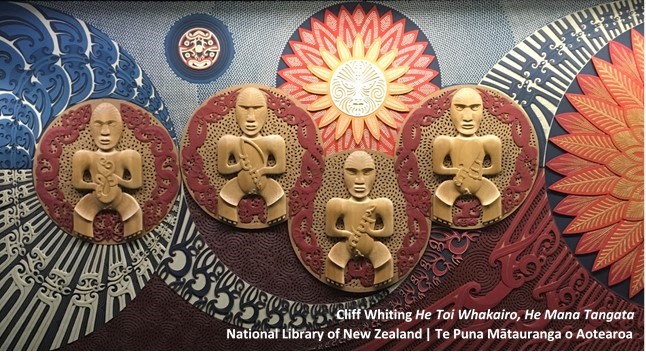Posts Tagged ‘policy’
Learning from the Waitangi Tribunal Māori health report
The first report from the Waitangi Tribunal of its Kaupapa Inquiry into Māori health – Hauora – was released this month. It concluded that our primary health care system has failed to achieve Māori health equity; that New Zealand’s legislative, policy and administrative framework is not, in fact, fit to achieve this outcome.
News reports have highlighted the Tribunal’s findings of institutional racism. Here, we discuss some other aspects of the Tribunal’s report to help agencies give effect to some of the gems in the report (eg in their policies and practices).
We look first at the Tribunal’s approach to the Crown’s 3 Ps Treaty framework. We then look at new Treaty principles proposed by the Tribunal. Later, at some strategies for reflecting these principles.
The “3 Ps” – out with the old
The “3 Ps” comprise the well-established Crown Treaty framework – the principles of partnership, participation and protection. They came out of the Royal Commission on Social Policy in 1986.
The Tribunal described these principles as outdated and the Crown accepted that they reflect a “reductionist view” of the Treaty (Hauora, p79).
Thirty years on, with a lot more Treaty jurisprudence and Treaty settlements under our national belt, there’s clearly room to do better. The Tribunal proposes a new set of Treaty principles for New Zealand’s primary health care framework.
They are principles the Tribunal has relied on in a number of key reports (eg Te Whānau o Waipereira Report; The Napier Hospital and Health Services Report; Tū Mai Te Rangi! Report on the Crown and Disproportionate Reoffending Rates.) They are relevant to all sectors. We briefly outline them below by reference to the articles of Te Tiriti o Waitangi.
Tribunal treaty principles
Principle 1: Recognition and protection of tino rangatiratanga
This is guaranteed under Article 2 of Te Tiriti. It means that the right of Māori to organise in whatever way they choose – whānau, hapū, iwi or other form of organisation and to exercise autonomy and self-determination to the greatest extent must be recognised and protected.
Principle 2: Equity
This is an Article 3 Treaty commitment. It’s also about acting in good faith as a Treaty partner.
Equity is not just about allowing equal access to healthcare or other services for all. The Waitangi Tribunal highlighted that equity is also not just about reducing disparities. It involves the bigger goal of equitable outcomes for Māori.
The Tribunal approved the World Health Organisation’s definition “Equity is the absence of avoidable or remediable differences among groups of people, whether those groups are defined socially, economically, demographically or geographically.” (Hauora, p67)
Principle 3: Active protection
This principle is all about action and leadership. Devolution and permissive arrangements without Treaty leadership are not sufficient. Provision for equal opportunity or a “one-size fits all” approach also falls short.
The Crown must actively pursue and do whatever is reasonable and necessary to ensure the right to tino rangatiratanga and to achieve equitable health and social outcomes for Māori.
Principle 4: Partnership
Yes, this “P” remains. Its meaning reflects an interplay of articles 1 and 2 of Te Tiriti o Waitangi.
For the Crown to be a good governor it must recognise and respect the status and authority of Māori to be self-determining in relation to resources, people, language and culture (ie tino rangatiratanga). It must involve Māori at all levels of decision making.
Both the Treaty parties must act reasonably and in good faith towards each other.
Principle 5: Options
This principle is about giving real and practical effect to the principles of tino rangatiratanga and equity; articles 2 and 3 of Te Tiriti. Where kaupapa Māori services exist, Māori should have the option of accessing them as well as culturally appropriate mainstream services. They should not be disadvantaged by their choice.
It’s the job of the Crown to ensure each option is viable and sustainable by providing sufficient financial and logistical support, strong leadership and effective monitoring.
Report findings
The Tribunal concluded that the Crown had breached the Treaty in a number of ways. It found that from inception Māori primary health care organisations have been significantly underfunded, leading to a decline in the number of services. Whereas at a peak there were 14 Māori primary health organisations in the country, there are now only four (Hauora,p156).
A similar story of unrealised potential and breaches of the partnership and tino rangatiratanga obligations can undoubtedly be told in other sectors. For example, Iwi Social Services and Maatua Whangai were incorporated into the Childrens Young Persons and their Families Act (ie Oranga Tamariki Act) in 1989. They were established to play a key role in the statutory care system in response to Puao-Te-Ata-tu. However, they were undermined by a lack of resourcing and support (eg Shane Walker, Maatua Whangai o Otepoti Reflections -ANZASW).
The Tribunal report makes a number of recommendations. This includes two interim recommendations, that:
- an independent Māori statutory authority be explored
- the Crown and claimants work on a way of assessing the extent of underfunding of Māori primary health organisations and providers.
The parties must report back to the Tribunal on progress with these after 7 months.
Some learnings
There’s some great learning in the Tribunal report about giving effect to Te Tiriti o Waitangi. Some key points for organisations’ policies and practice are that:
- agencies should have a strong leadership focus on fulfilling Treaty obligations and achieving equitable outcomes for Māori
- feedback and data should be gathered about access and outcomes for Māori. It should be regularly reviewed, evaluated and used to support continuous improvement
- if you’re not making progress be wary of attributing blame to clients. Instead, consider different ways of delivering your service
- avoid deficit language “hard to reach”, “vulnerable children” that tend to individualise what are often structural or system issues
- consider and invest time, good faith and energy into building constructive treaty partnerships (with mana whenua, local Māori, tau iwi agencies)
- the Crown must ensure funding of kaupapa Māori services is sufficient for their viability and that mainstream services it funds are competent to provide services to Māori (ie staff and board are culturally competent)
- Māori are engaged at all levels of social and health sector decision-making from governance through to service delivery.
More to come
There’s more in this and other Waitangi Tribunal reports to learn from. Like other Tribunal reports its rich in opportunities to learn about Treaty compliance.
In another blog we’ll take a look at how the Social Sector Accreditation Standards- Level 2 and Core Health and Disability Standards line up with the Tribunal’s approach.
Get in touch with us if you’re wanting help with your policies and procedures. We love to hear from you.
Balancing privacy with family, whānau involvement
It can seem hard to balance a strong rights orientation, especially the right to privacy, with a family, whānau inclusive approach.
This post looks at how your organisational policy and procedures can help.
Balancing privacy with family, whānau involvement
How can we respect a client’s right to privacy but engage meaningfully with their whānau? A conundrum recently noted by the Mental Health inquiry.
The right to privacy especially in the health and personal wellbeing area is regarded as sacrosanct. It is important to clients’ trust in social and health practitioners. It helps free people up to kōrero about the things they need to, and move on from whatever ails them.
But the problem with privacy is its individualistic focus. It can leave a person, the client, feeling lonely.
The right to privacy, tends to reinforce views of the client as an individual and separate being first, with their relationships coming second. It helps “protect” or separate the individual from their connections to the extent the client wants this. Whether family, whānau, hapū are involved or connected in with the client, depends on the client’s choice and their activation.
As noted by the Mental Health Inquiry and many other reports, this approach can mean that family and whānau are left out in the cold about what’s going on with their person and how they can meaningfully support them. It is unhelpful to the healing process in both the short and longer term.
Organisational policy and procedures
So how can organisational policy help organisations balance the right to privacy with involving family and whānau in work with clients?
The evidence is clear: people want to connect, they need to (eg see Connection – the key to Healing and Resilience; Te Ōhāki: Whakawhanaungatanga Self-disclosure and information sharing is integral to this.
Organisational policies and procedures (eg referral, entry and planning policies) can help with requirements for:
- early engagement and kōrero with the client about who they connect with and how, their whakapapa and turangawaewae
- regular hui and other opportunities for mutual information sharing between client and family
- opportunities for positive client, family, whānau, hapū interactions
- whānau, hapū engagement and feedback in reviews and evaluations
- family, whānau, hapū engagement in exit planning
- when and how client information is shared by the organisation with others (eg with child protection matters).
So what about privacy? It’s still the client’s right but it’s not the starting point. The client’s rights to connectedness, whakawhanaungatanga, belonging and turangawaewae, are.
Contact the Policy Place if you want help with your organisational policies and procedures.
Renovation and policy review

If you like DIY renovating then policy review can be fun! The two jobs have a lot in common.
They can be more fun and effective when people are involved. Just like the room being renovated, the review process is improved by getting a diversity of views, feedback and data on what’s working, not working and needs to change.
Consider the broader context. When you paint a room, it needs to fit with the overall scheme of the house. Likewise, when reviewing your policy, consider your organisation’s kaupapa, vision and strategic plan.
Get updated about trends, what works best etc. When renovating a room or a policy, it’s a good idea to look at current trends, learn from new information and ideas.
Standards, laws, regulations and practice may well have changed since the last policy review and if relevant, should be addressed in the renovated policy.
Think about options for now and the future. You want to build in a good capacity for wear and tear when you’re renovating.
Likewise, changes you make from a policy review need to be workable and sustainable.
Identify options. Only decide on which one after scoping and planning for the practicalities eg the costs, the resources and actions needed to do the job properly and for any changes to endure.
Celebrate. Don’t we all love the feeling of satisfaction we get from a successful renovation? A celebration at the end is even better!
Or, from another perspective, it’s a great start to the next phase of implementing the policy.
See here if you want some ideas about effective implementation strategies.
Domestic Violence
Domestic violence has wide ranging impacts on the lives and opportunities of those it affects. From April this year, workplaces will be required to play their part in supporting domestic violence survivors. Are your policies and procedures going to be ready?
The Domestic Violence – Victims’ Protection Act 2018 commences on 1 April 2019. We are reviewing our members’ policies and procedures and will be updating them in readiness (look for our Policy release in March!).
The Act addresses the impact of domestic violence on a person who is in employment or to a child of the employee. It uses the domestic violence definition contained in the Domestic Violence Act which, in July 2019, will be replaced by a definition of family violence.
The Act entitles an employee to request a short term variation of employment terms to deal wtih the impact of domestic violence regardless of how long ago the domestic violence occurred and even if the domestic violence occurred before the person became an employee.
The Act also establishes entitlement to domestic violence leave up to 10 days.
There are a number of consequent obligations on employers.
A staff member affected by domestic violence must not be adversely treated by an employer for this reason. If adverse treatment occurs, the staff member will have a right to pursue a personal grievance.
Members already have family violence policies and procedures in place for staff and clients. The new legislation applies to the workplace.
We have assessed it will require only minimal change to staffing policies and procedures. Our existing policies support workplace awareness about family violence and responses to safety and support concerns. This will remain the focus but we will strengthen provision for leave and variation of employment terms to comply with the new legislation.
Contact us at the Policy Place for help with reviewing and updating your policies and procedures to comply with the new legislation and other upcoming changes.



